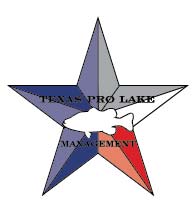Article of the Week 2 – Artificial Reefs
Posted by laymanc
Coastal ecosystems may be the most anthropogenically-altered on the planet. Habitat loss, over-fishing, nutrient loading, and many other impacts have fundamentally changed the structure and function of these systems. Many of these impacts operate over rather large spatial scales (think global warming or the loss of migratory fishes); however, most marine ecology actually is conducted at the smallest scales. Foundational ecological theory took root in experiments conducted in coastal intertidal zones, often at scales of a meter or less. But ecologists now are challenged to develop approaches that better fit the large scales at which human impacts are altering coastal ecosystems.
In terrestrial systems, “landscape” ecology is a well-developed sub-discipline. Yet tenets of this are rarely applied in marine systems. This study was among the first to do so and to use manipulative approaches as we constructed a series of artificial reefs in the Bight and specifically chose locations within different “seascape” contexts. This allowed us to examine the importance of relatively large-scale (hundreds of meters) features in determining local fish community structure. That is, instead of just examining small-scale aspects of the reef itself, we included much larger scale factors (such as seagrass cover) and used these to explain the makeup of fish communities.
See the dozens of unique artificial fish habitat models, fish attractors and fish cover used at fishiding.com, the leader in science based, proven, fish protection.
We found that the amount of seagrass at large spatial scales was one of the most important features determining to number and identity of fishes using these artificial reefs. Specifically, reefs that had more seagrass within 100 m had more fishes. This may be explained by the fact that many reef species like grunts, snapper and lobster that use reefs during the day migrate out into the surrounding seagrass at night to feed. However, not all species of fish responded to the amount of seagrass in the same way. For example, the number of white grunts increased with more seagrass cover within the seascape, but the number of French grunts decreased. This means that changes in the cover of seagrass within large areas surrounding reefs can affect both the number and types of fishes using reefs. Human activities that cause even subtle changes to seagrass habitat can impact reef fish communities even before the complete loss of seagrass habitat.




